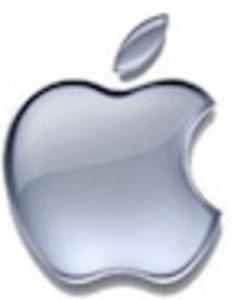Luckily, we aren’t in the business of trying to figure out what exactly is up Apple’s sleeve at the upcoming Jan. 27 event at Yerba Buena Gardens. Much speculation has surfaced in recent weeks on what products and services will announced.

Now, in addition to the iTablet madness, new information comes in the form of several reports that Apple is set to announce a cloud-based music service. This will likely incorporate its recent purchase of the Lala application with Apples’ hardware and iTunes empire, bringing a ray of hope that iTunes will become more social – as suggested by ReadWriteWeb’s Sarah Perez nearly two years ago.
Let’s focus on the positive implications of a cloud-based music service and take a quick look at what it will take for Apple to be a success in the cloud.
Ease of use
A requirement across the service will be ease of use, and an understanding of how and where music is can be used and shared. Lala has made progress in this area in its partnership with Google, and Apple is legendary for its focus on easy-to-use products. To win over consumers, Apple must present both the streaming and the controls as a superior option, instead of a barrier like DRM has been in the past.
Rights management
In 2009, Apple made major changes to iTunes to remove the DRM barrier, which open up music playback options considerably. If the company goes forward with streaming services, a major challenge in managing that is tracking the sales channel. Apple is uniquely positioned to handle this challenge due to iTunes and its existing and extensive supply chain. New versions of iTunes give users the ability to share music between rooms in a house and devices in a network. The application logs that sharing, which allows Apple to prepare its distribution channel for different types of delivery.
Steve Jobs authored an open letter to the music industry in 2007 and laid out three options for how Apple could proceed to solve the challenge of DRM. Option three was clearly the most attractive from Apple’s view, quoted below:
“The third alternative is to abolish DRMs entirely. Imagine a world where every online store sells DRM-free music encoded in open licensable formats. In such a world, any player can play music purchased from any store, and any store can sell music which is playable on all players. This is clearly the best alternative for consumers, and Apple would embrace it in a heartbeat. If the big four music companies would license Apple their music without the requirement that it be protected with a DRM, we would switch to selling only DRM-free music on our iTunes store. Every iPod ever made will play this DRM-free music.”
Network services and discovery
A key component of of this service will be the ability to find music on personal networks and share it with other people. Apple has led the industry with services like Bonjour and peer-to-peer networking on the iPhone. But there still seems to be a lot of room for challenge in this area – as we’ve seen with the iPhone in providing a reliable service that meets all conditions, especially in the mobile world.
The first implementations of peer-to-peer networking between devices on the iPhone have required developers to work on top of the core framework to work around dropped connections, latency and other issues. In the IP world, Cisco and others had to solve this with QoS (quality of service) protocols on top of the networking stack. It seems likely that these types of extensions will be needed for streaming music between mobile devices, as well for it to be a pleasure to use in mobile environments.
Identity management
Perhaps the crux of this capability will be the ability to identify and manage real users on the network who are accessing and sharing copyrighted work. This has been the key issue with services like BitTorrent (which don’t show personal information) and MP3s, didn’t require any logging or identification of the person and allow the file to be played by anyone who copies it.
Clearly the music industry requires a balance between distribution being easy and viral – and getting paid for the appropriate copies per license of the music. Due to licensing requirements and the challenges of copying digital works, knowing that a person is unique is key, and having the hardware that plays the music is required to keep track of appropriate usage and fees.
Apple has already made major steps forward in all areas of its business in having unique keys for individuals. And with the iPhone it has benefited greatly from the clear assumption that a person is connected to their device in a one-to-one relationship that can be tracked.
Scaling
The true test of any service is whether it can be successfully scaled to users without fail. Of all of Apple’s success in the industry, the one challenge we have witnessed was the release of Push Notification and MobileMe. Both of these share the characteristic of scaling large scale messages. Apple seems serious about cloud-based music services; perhaps this is one of the reasons the company is building a massive new data center, and building additional relationships with carriers and backbone providers. If any part of Apple’s execution track record can be scrutinized, scaling would be it.
From a review of the evidence, it looks like Apple has been quietly working hard at getting all of the puzzle pieces together for streaming music. If these pieces work and scale as planned, Apple may be in a position to solve the issue of sharing intellectual property – and monetizing it.
Here’s hoping Apple can make lightening strike twice and transform an industry once again.
What do you think, will Apple deliver a controlled sharing blueprint for music? Will this be applied to all copyrighted information assets in the future?










